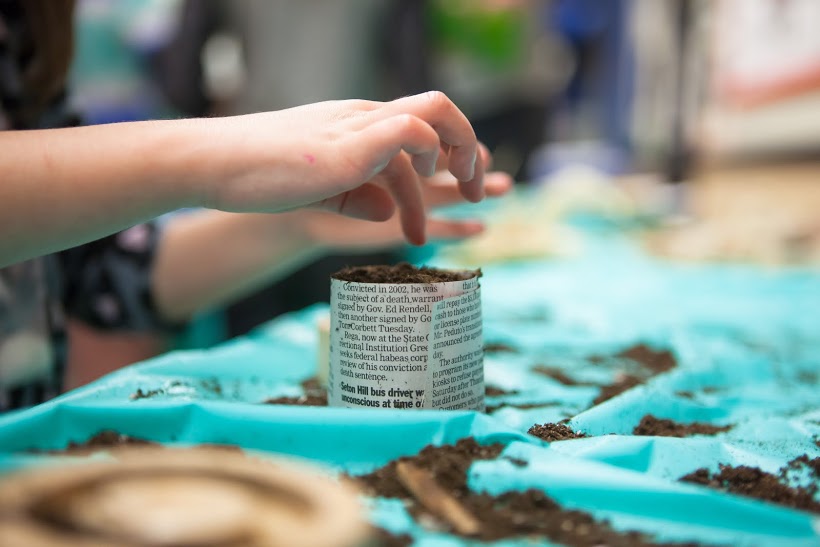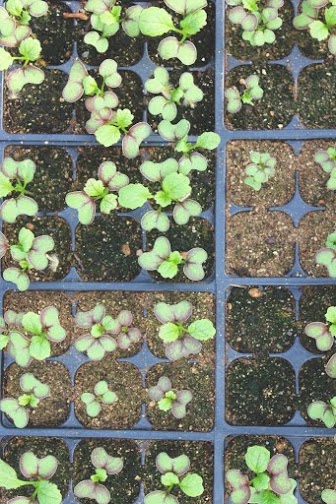Check in weekly, on Wednesdays, to read our new post on gardening, harvesting, and making use of that fine, extra-local produce! We’ll share tips and techniques, gleaned from our urban farms and gardens. Email info@growpittsburgh.org with any topics you’d like us to cover.
Starting seeds at home can be a fun and rewarding activity. With some equipment and regular care, you can grow unique varieties of plants for your own garden and to share. In this article we’ll discuss some good options for containers for seed starting. Keep an eye out for posts that will follow, detailing other steps in the seed-starting process.

An ESY student plants seeds in a newspaper pot.
Containers
Seeds will grow in just about any container, but some make better seed-starting environments than others. We recommend containers that are fairly shallow; 2-3” deep works well. Containers can be made from various materials, like plastic, paper, or cardboard. As long as the container is permeable to water or has drainage holes, it will work. Here’s a list of some good options:
- Yogurt containers, cut down to 2-3” tall, with drainage holes poked in the bottom.
- Plastic cell packs available commercially (these can be reused – just clean well with a 3:1 water to vinegar mix). Our Garden Resource Center, opening in April, will have cell packs available.
- Cardboard egg cartons.
- This device allows you to make pots from newspaper!
- Pots made from peat or other biodegradable materials, like cowpots.
- Cedar boxes.
- Small terra cotta pots.

These red mustard seedlings grow in plastic cell packs at the Frick greenhouse.
Containers that are more porous, like terra cotta and peat pots, will dry out quickly and require more watering. Along the lines of watering, a helpful accessory for any container you choose is a solid tray. You can purchase these or use an old cookie sheet or boot tray. A tray catches water that drains out of containers as well as soil and spills.
When choosing containers, it can be helpful to consider what types of seedlings you will be growing. Seeds of some crops can be broadcast over a larger container. For instance, onions, leeks, and cilantro work well this way. But seeds of other crops, like tomatoes, peppers, and squash, grow better with one or two seeds placed in each container (these crops should be thinned to one per container).
In general, error on the side of giving each seed more space, rather than less. If a seeding comes up thicker than you expect, wait until the plants develop their first true leaves. Then either thin the plants by cutting out the weaker ones, or carefully re-pot each plant into a larger container.

These dill seedlings were sown directly into biodegradable pots at the Frick greenhouse.
Soil
For seed starting, a sterile, soil-less potting mix is best. Germinating seeds and tiny seedlings are particularly susceptible to soil-borne disease, so new, sterile potting mix is important. Additionally, the texture of the potting mix matters, as tiny roots need air pockets in order to grow. A compost- or peat-based mix stays fluffy throughout the repeated watering that small seedlings need, while true soil becomes compacted.
